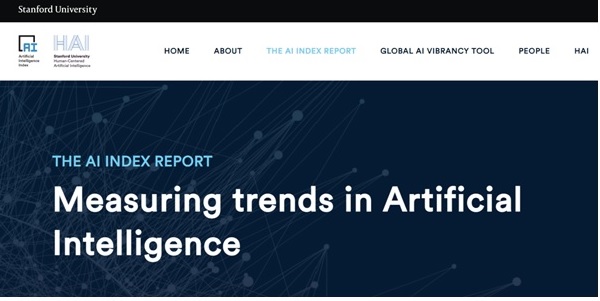
The biggest surprise for me in the “Measuring trends in Artificial Intelligence” from Stanford University (a must read BTW) is a section on measuring progress on symbolic (or logical) reasoning in AI, which is the process of drawing conclusions from sets of assumptions. They consider two major reasoning problems, Boolean Satisfiability (SAT) and Automated Theorem Proving (ATP). Each has real-world applications (e.g., circuit design, scheduling, software verification, etc.) and poses significant measurement challenges.
for some background to symbolic reasoning see: how close are computers to automating mathematical reasoning
Measuring trends in Artificial Intelligence from Stanford University is a must-read report every year.
This year, it has expanded more
Here are insights from the report
- AI has played a role in overcoming COVID especially in drug discovery and other related areas in fighting the pandemic. AI investment in drug design and drug discovery has increased significantly
- The percentage of graduates undertaking a PhD in AI has increased
- There is a big uptake in generative AI in the ability to compose text, audio, and images to a sufficiently high standard that humans have a hard time telling the difference between synthetic and non-synthetic outputs for some constrained applications of the technology.
- AI has a diversity challenge
- China overtakes the US in AI journal citations After surpassing the US in the total number of journal publications several years ago, China now also leads in journal citations; however, the US has consistently (and significantly) more AI conference papers (which are also more heavily cited) than China over the last decade.
- Surveillance technologies are fast, cheap, and increasingly ubiquitous The technologies necessary for large-scale surveillance are rapidly maturing, with techniques for image classification, face recognition, video analysis, and voice identification all seeing significant progress in 2020.
- AI ethics lacks benchmarks and consensus Though a number of groups are producing a range of qualitative or normative outputs in the AI ethics domain, the field generally lacks benchmarks that can be used to measure or assess the relationship between broader societal discussions about technology development and the development of the technology itself. Furthermore, researchers and civil society view AI ethics as more important than industrial organizations.
- AI has gained the attention of the U.S. Congress The 116th Congress is the most AI-focused congressional session in history with the number of mentions of AI in congressional record more than triple that of the 115th Congress.
- Major powers, including China, the European Union, and the United States, are racing to invest in AI research.
- The industrialization of computer vision: Computer vision has seen immense progress in the past decade, primarily due to the use of machine learning techniques (specifically deep learning). New data shows that computer vision is industrializing: Performance is starting to flatten on some of the largest benchmarks, suggesting that the community needs to develop and agree on harder ones that further test performance. Meanwhile, companies are investing increasingly large amounts of computational resources to train computer vision systems at a faster rate than ever before. Meanwhile, technologies for use in deployed systems—like object-detection frameworks for analysis of still frames from videos—are maturing rapidly, indicating further AI deployment.
- Natural Language Processing (NLP) outruns its evaluation metrics: Rapid progress in NLP has yielded AI systems with significantly improved language capabilities that have started to have a meaningful economic impact on the world. Google and Microsoft have both deployed the BERT language model into their search engines, while other large language models have been developed by companies ranging from Microsoft to OpenAI. Progress in NLP has been so swift that technical advances have started to outpace the benchmarks to test for them. This can be seen in the rapid emergence of systems that obtain human level performance on SuperGLUE, an NLP evaluation suite developed in response to earlier NLP progress overshooting the capabilities being assessed by GLUE.
- New analyses on reasoning: Most measures of technical problems show for each time point the performance of the best system at that time on a fixed benchmark. New analyses developed for the AI Index offer metrics that allow for an evolving benchmark, and for the attribution to individual systems of credit for a share of the overall performance of a group of systems over time. These are applied to two symbolic reasoning problems, Automated Theorem Proving and Satisfiability of Boolean formulas.
- Machine learning is changing the game in healthcare and biology: The landscape of the healthcare and biology industries has evolved substantially with the adoption of machine learning. DeepMind’s AlphaFold applied deep learning technique to make a significant breakthrough in the decades-long biology challenge of protein folding. Scientists use ML models to learn representations of chemical molecules for more effective chemical synthesis planning. PostEra, an AI startup used ML-based techniques to accelerate COVID-related drug discovery during the pandemic.
